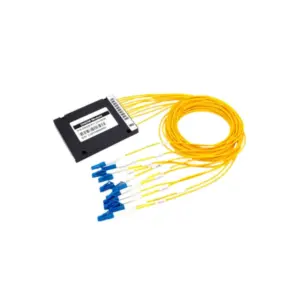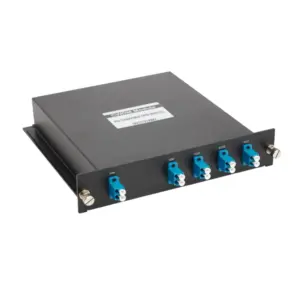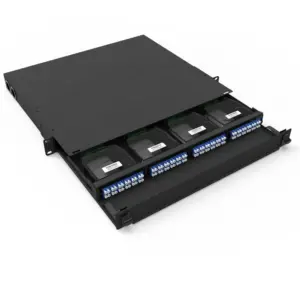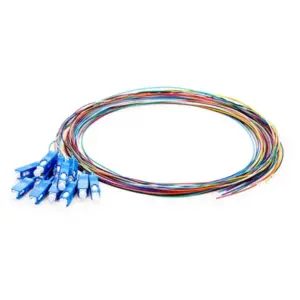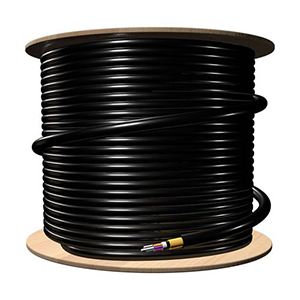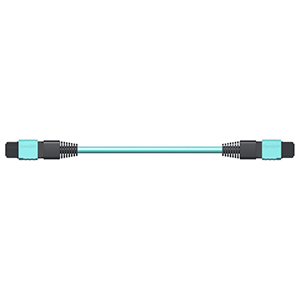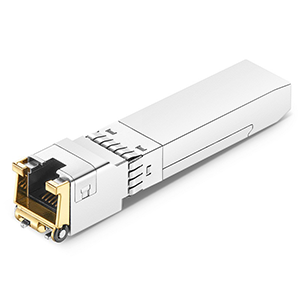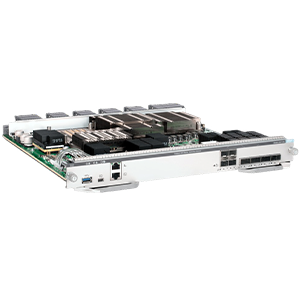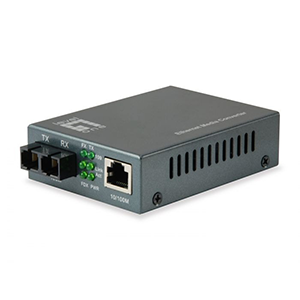I am pleased to introduce you to DWDM optical fiber, a technology that plays an important role in the field of optical communications. DWDM optical fiber has brought revolutionary changes to modern communication networks by increasing optical fiber transmission capacity and improving network efficiency. Let us have an in-depth understanding of the overview, working principles, advantages and application scenarios of DWDM optical fiber, and provide you with deployment and management suggestions to help you build efficient, high-capacity optical communication solutions.
Overview of DWDM Fiber
DWDM optical fiber is a technology used for optical communications. It achieves high-capacity and high-efficiency optical fiber transmission by transmitting multiple optical signals of different wavelengths simultaneously on a single optical fiber. DWDM technology allows dozens or hundreds of optical signals of different wavelengths to be multiplexed onto the same optical fiber, thereby greatly increasing the transmission capacity of the optical fiber.
In traditional optical fiber communications, each optical fiber can only transmit an optical signal of one wavelength, which limits the transmission capacity of the optical fiber. DWDM optical fiber greatly improves the utilization efficiency of optical fiber by transmitting optical signals of multiple wavelengths at the same time. Each wavelength can carry an independent data stream, greatly increasing the transmission capacity of optical fiber to meet the growing demand for data transmission.
DWDM optical fiber plays a very important role in optical communications. It has the following key functions:
-
Increase optical fiber transmission capacity: By using optical signals of different wavelengths, DWDM optical fiber can transmit multiple independent data streams to the same optical fiber at the same time, thereby greatly increasing the transmission capacity of the optical fiber. This enables optical fiber networks to carry more data flows and high-speed transmission requirements, meeting the large bandwidth requirements of modern communication networks.
-
Improve network efficiency: The use of DWDM optical fiber can significantly improve network efficiency. By multiplexing multiple wavelengths on optical fibers, optical fiber resources can be fully utilized and the number and space occupied of optical fibers can be reduced. This reduces the cost and complexity of fiber optic networks and increases network scalability and flexibility.
-
Extend the optical fiber transmission distance: DWDM optical fiber technology can also enhance the transmission capacity of optical signals through optical amplifiers and other technical means, so that the optical fiber transmission distance can be extended. This is very important for long-distance fiber optic transmission and coverage of fiber optic networks.
How DWDM Fiber works
DWDM (Dense Wavelength Division Multiplexing) technology is based on the principle of Wavelength Division Multiplexing (WDM) and realizes high-density optical communications by simultaneously transmitting multiple optical signals of different wavelengths on optical fibers. The following is the basic principle and working process of DWDM optical fiber:
-
Wavelength division multiplexing (WDM): Wavelength division multiplexing is a technology that combines multiple optical signals of different wavelengths into the same optical fiber for transmission. It uses the wavelength of the optical signal as the carrier of the signal. Optical signals of different wavelengths can be transmitted independently in the optical fiber without interfering with each other.
-
DWDM technology: DWDM is a high-density wavelength division multiplexing technology that reduces the wavelength interval to the nanometer level, allowing multiple wavelengths to be transmitted simultaneously on the same optical fiber. A typical DWDM system can support dozens or even hundreds of wavelengths, with the spacing between each wavelength typically being 0.8 nanometers or less.
-
Generation and modulation of optical signals: In a DWDM system, multiple optical signals need to be generated by lasers and modulated into digital signals by a modulator. Each wavelength corresponds to a specific optical frequency and can carry an independent data stream.
-
Wavelength division multiplexing: In the wavelength division multiplexing process, optical signals of multiple wavelengths are combined onto the same optical fiber by using optical splitters and multiplexers. When optical signals are transmitted in optical fibers, their wavelengths remain unchanged and do not affect each other.
-
Optical fiber transmission: The combined multiple optical signals are transmitted through optical fibers. Due to the low loss and low dispersion characteristics of DWDM fiber, optical signals can be transmitted over long distances in the fiber while maintaining good signal quality.
-
Demultiplexing: At the receiving end, the optical signals of multiple wavelengths transmitted on the optical fiber are separated by using a demultiplexer. The optical signal of each wavelength is converted into an electrical signal by a photodetector, and subsequently demodulated and processed to restore the original data stream.
Through the above steps, DWDM optical fiber can simultaneously transmit optical signals of multiple wavelengths on the same optical fiber, achieving high-density optical communication. This can greatly improve the transmission capacity and efficiency of optical fiber and meet the needs of modern communication networks for large bandwidth.
DWDM Fiber advantages and application scenarios
DWDM (Dense Wavelength Division Multiplexing) optical fiber has many advantages, making it widely used in optical communications in various fields. The following are the main advantages and application scenarios of DWDM fiber:
Application scenarios:
-
Telecommunications: DWDM optical fiber is widely used in the telecommunications field to carry large amounts of voice, data and video transmission. By providing high bandwidth and flexible network scalability, DWDM optical fiber meets telecom operators’ needs for high-capacity transmission and multi-service coverage.
-
Data center interconnection: Data centers require high-speed, high-capacity and reliable connections to meet the needs of large-scale data transmission and cloud computing applications. DWDM optical fiber provides high-density optical communication capabilities, enabling fast and reliable interconnection between multiple data centers.
-
WAN expansion: DWDM optical fiber plays an important role in WAN expansion. By multiplexing optical signals of multiple wavelengths on optical fibers, DWDM optical fibers can greatly increase the transmission capacity of wide area networks and achieve high-speed, long-distance data transmission.
-
Scientific research: DWDM optical fiber is also widely used in scientific research fields, such as optical sensing, spectral analysis and quantum communication. By taking advantage of the high bandwidth and multi-wavelength characteristics of DWDM fiber, researchers can achieve high-precision measurement and transmission.
The composition and technical elements of DWDM Fiber
DWDM (Dense Wavelength Division Multiplexing) optical fiber system consists of multiple components and key technical elements. The following are the main components and technical elements of the DWDM optical fiber system:
component:
-
Optical fiber: Optical fiber is the medium for transmitting optical signals in the DWDM system. It usually uses single-mode fiber (Single-Mode Fiber, SMF), which has low loss and low dispersion characteristics and can support long-distance optical signal transmission.
-
Wavelength division multiplexer (Multiplexer): The wavelength division multiplexer is a key component that combines optical signals of multiple wavelengths onto the same optical fiber. It can distribute optical signals of different wavelengths to different channels and combine them into composite optical signals for transmission.
-
Demultiplexer: Demultiplexer is a component that separates the composite optical signal transmitted on the optical fiber into optical signals of multiple wavelengths. It can separate each wavelength in the composite optical signal and let it enter the corresponding receiver for demodulation and processing.
-
Optical Amplifier: Optical amplifier is a device used to enhance the intensity of optical signals. In DWDM systems, optical amplifiers are usually used to compensate for the loss of optical signals during transmission and provide sufficient optical power to maintain signal quality and transmission distance.
Technical elements:
-
Channel Spacing: Channel spacing refers to the spacing distance between adjacent wavelengths in the DWDM system. Typically, DWDM systems have channel spacing of 0.8 nanometers (100 GHz) or less to achieve high-density wavelength division multiplexing.
-
Wavelength Selection: Wavelength selection refers to selecting and determining the specific wavelength used by each channel in the DWDM system. Different wavelengths correspond to different optical frequencies, and each wavelength can carry an independent data stream.
-
Types of optical amplifiers: Commonly used optical amplifier types in DWDM systems include Erbium-Doped Fiber Amplifier (EDFA) and Raman Amplifier. EDFA is the most commonly used optical amplifier, which can amplify optical signals in C-band and L-band. Raman amplifiers use Raman scattering of light in optical fibers to achieve amplification.
-
Optical monitoring and control: The DWDM system also includes technical elements of optical monitoring and control, which are used to monitor and adjust the power and quality of optical signals. These elements include optical power meters, optical spectrum analyzers, and optical control units.
Through the above components and technical elements, the DWDM optical fiber system can achieve high-density transmission and flexible expansion of optical signals of multiple wavelengths. Optical fiber is used as a transmission medium. Wavelength division multiplexers and demultiplexers are used to combine and separate optical signals. Optical amplifiers are used to enhance signal strength. Channel spacing and wavelength selection determine the distribution and transmission mode of optical signals. Light monitoring and control technology ensures the quality and stability of optical signals.
How to deploy and manage DWDM Fiber
The deployment and management of DWDM (Dense Wavelength Division Multiplexing) optical fibers are crucial to ensuring network performance and stability. Here are some suggestions and best practices:
Deployment guidance:
-
Network planning: Before deploying DWDM fiber, adequate network planning is necessary. Determine network needs, capacity requirements and coverage, draw fiber layout diagrams, consider network topology and connectivity requirements.
-
Equipment selection and configuration: Select DWDM equipment that meets your needs, including wavelength division multiplexers, demultiplexers, optical amplifiers, etc. Ensure device compatibility and interoperability. Configure device parameters and channel settings to ensure reasonable wavelength selection and channel spacing.
-
Optical fiber connection: When connecting optical fiber, pay attention to keeping the optical fiber clean and the correct connection method. Use appropriate fiber optic connectors and accessories to avoid bending and stretching fiber optics. Use fiber optic connection test instruments to verify the quality and performance of your connections.
-
Fiber protection: For important fiber links, consider using redundant paths and protection mechanisms to ensure that backup paths are available when the main link fails. Use optical fiber protection equipment such as optical switch (Optical Switch) or optical fiber protector (Optical Protection Unit).
Management suggestions:
-
Performance monitoring: Regularly monitor the performance of DWDM optical fiber, including optical power, signal quality, bit error rate, etc. Use optical power meters, spectrum analyzers, and performance monitoring systems to monitor and record fiber performance indicators in real time.
-
Troubleshooting: When optical fiber failure or signal abnormality occurs, troubleshooting and diagnosis should be carried out in a timely manner. Use fiber fault locating instruments and fiber test equipment to locate the cause and location of problems. Maintain troubleshooting records and documentation for future reference and improvements.
-
Fiber resource management: Effective management of fiber resources is key. Establish an inventory of fiber resources, including information such as fiber location, channel usage, and connected devices. Use a fiber resource management system to track and manage fiber configuration and usage.
-
Regular maintenance: Perform regular fiber optic maintenance and upkeep, including cleaning fiber optic connectors, checking fiber loss and dispersion, etc. Use appropriate cleaning tools and methods to keep fiber optics in good condition.
-
Training and documentation: Provide training to network administrators and technicians to make them familiar with the operation and management of DWDM fiber optic systems. Establish detailed documents and operation manuals, including network topology diagrams, device configurations and troubleshooting procedures, to facilitate daily management and maintenance.
By following the above deployment and management recommendations, you can ensure the high performance and stability of your DWDM fiber optic system. The correctness of network planning and equipment configuration, the quality of optical fiber connections, the timeliness of performance monitoring and troubleshooting, and the effective management of optical fiber resources are all key factors to ensure the normal operation of the DWDM optical fiber system.
Future development trend of DWDM Fiber
DWDM (Dense Wavelength Division Multiplexing) optical fiber technology plays an important role in the field of optical communications and still has many development opportunities in the future. The following is a discussion of the future development trends of DWDM optical fiber:
-
Higher density wavelength division multiplexing: With the explosive growth of data traffic, the demand for higher density wavelength division multiplexing technology is also increasing. In the future, DWDM systems will develop towards smaller channel spacing and higher channel density to achieve greater data capacity and higher transmission rates.
-
Flexible spectrum management: In order to better adapt to the needs of different applications and services, DWDM optical fiber systems will develop towards more flexible spectrum management. This includes dynamic wavelength routing and spectrum allocation technology that enables operators to adjust the allocation of wavelength and spectrum resources as needed.
-
Integration of optical fiber communications and wireless networks: With the development of 5G networks and the increase in Internet of Things applications, DWDM optical fiber technology will be more closely integrated with wireless networks. DWDM optical fiber can be used as a high-speed transmission medium between 5G base stations, providing high-capacity and low-latency connections. In addition, DWDM optical fiber can also be used in applications such as wireless optical fiber distributed antenna systems (DAS) and wireless optical access (WRA).
-
Combination with emerging technologies: DWDM optical fiber technology will be combined with other emerging technologies to meet growing needs. For example, DWDM optical fiber can be combined with cloud computing to provide high-speed, high-bandwidth connections for cloud services. In addition, DWDM optical fiber can also support IoT applications and achieve efficient communication between IoT devices through large-capacity transmission and low-power optical fiber communication.
Summarize:
Choose the DWDM fiber optic solution that suits your needs and make full use of its advantages and functions. You will be able to stand out in the highly competitive business environment. Through reasonable deployment and management, we can give full play to the advantages of the DWDM fiber optic system and build an efficient, High-capacity optical communication solutions and prepare for future development trends.
DWDM Fiber Related Products
DWDM (Dense Wavelength Division Multiplexing) is a technology used in optical fiber networks to increase the capacity and efficiency of data transmission. It allows multiple optical signals to be transmitted simultaneously over a single optical fiber by using different wavelengths of light.
Lorem ipsum dolor sit amet, consectetur adipiscing elit, sed do eiusmod tempor incididunt ut labore et dolore magna aliqua. Ut enim ad minim veniam, quis nostrud exercitation ullamco laboris nisi ut aliquip ex ea commodo consequat.
DWDM (Dense Wavelength Division Multiplexing) technology is typically used with single-mode fiber optic cables. Single-mode fiber provides a higher bandwidth and longer transmission distances, making it suitable for the high-capacity and long-haul applications where DWDM is commonly deployed.
WDM (Wavelength Division Multiplexing) is a broader term that encompasses both DWDM (Dense Wavelength Division Multiplexing) and CWDM (Coarse Wavelength Division Multiplexing). WDM refers to the technique of combining multiple optical signals onto a single fiber by utilizing different wavelengths of light. DWDM specifically refers to a more advanced form of WDM that tightly packs a large number of wavelengths into the fiber, allowing for high-capacity data transmission.
DWDM (Dense Wavelength Division Multiplexing) works by using multiple wavelengths of light to transmit multiple data streams simultaneously over a single optical fiber. Each data stream is assigned a specific wavelength or color of light. The DWDM system combines these wavelengths using multiplexing techniques and separates them at the receiving end using demultiplexing. This allows for a significant increase in the capacity and efficiency of data transmission.
DWDM (Dense Wavelength Division Multiplexing) technology is primarily used in high-capacity optical networks, such as long-haul and metro networks, to transmit large amounts of data over long distances. It is commonly deployed in telecommunications, internet service providers, data centers, and other network infrastructure where high bandwidth and efficient data transmission are required.
DWDM (Dense Wavelength Division Multiplexing) is a digital technology. It uses digital modulation techniques to encode data onto the optical signals. The data carried by the optical signals can be in various digital formats, such as Ethernet, SONET/SDH, or Fibre Channel, depending on the application.
1.Increased capacity: DWDM allows for the transmission of multiple data streams simultaneously, significantly increasing the capacity of optical fiber networks.
2.Long-distance transmission: DWDM enables high-speed data transmission over long distances, making it suitable for long-haul and metro networks.
3.Scalability: DWDM systems can be easily upgraded and expanded by adding more wavelengths to accommodate growing data demands.
4.Efficient use of fiber: By multiplexing multiple signals onto a single fiber, DWDM optimizes the use of fiber infrastructure, reducing the cost per bit of transmitted data.
DWDM (Dense Wavelength Division Multiplexing) offers higher channel capacity and narrower channel spacing compared to CWDM (Coarse Wavelength Division Multiplexing). DWDM systems can support a greater number of wavelengths and achieve higher data rates, making them suitable for high-capacity and long-haul applications. CWDM, on the other hand, is typically used for shorter distances and lower capacity applications.


